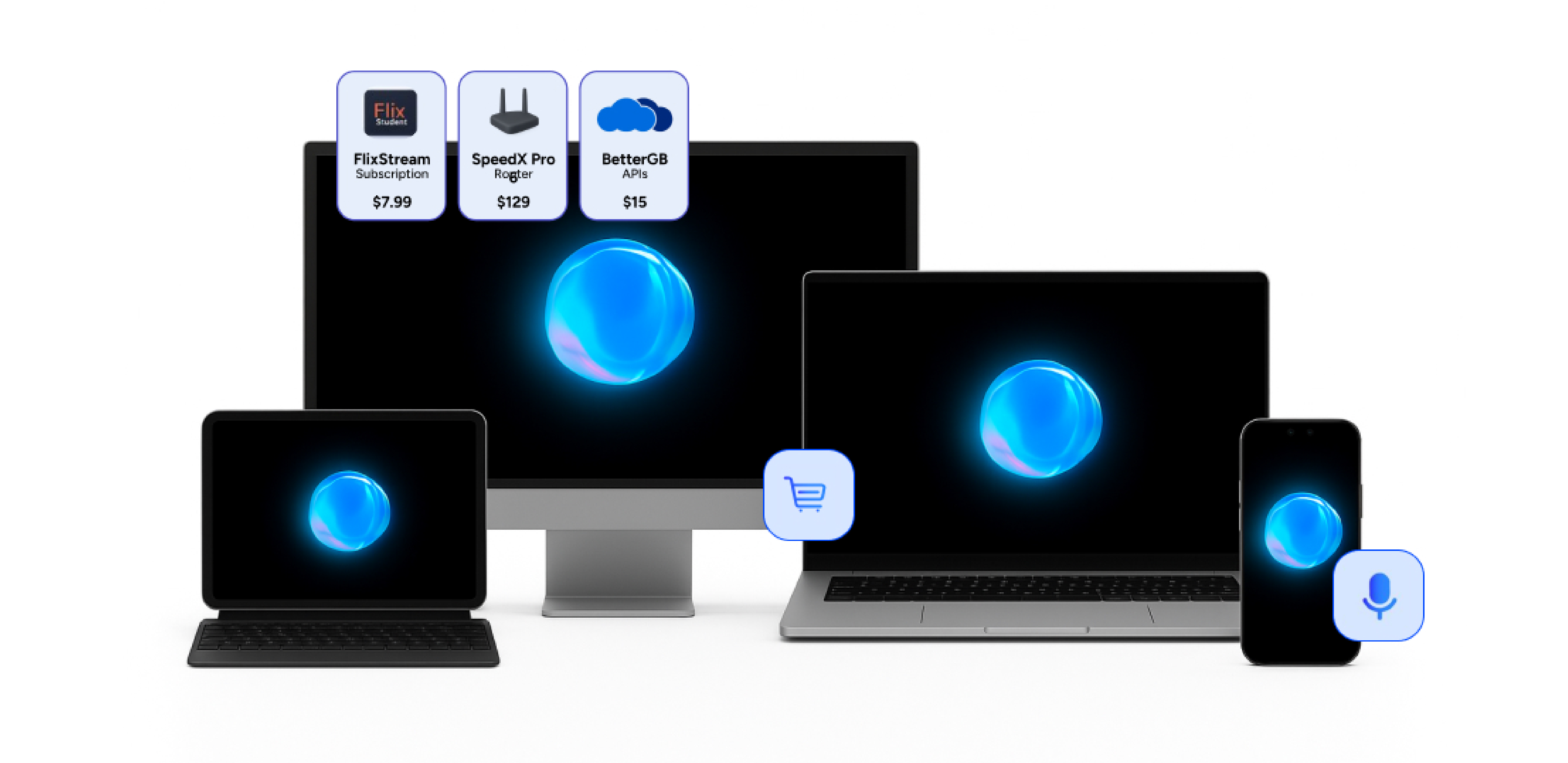Conversational AI in Telecom Commerce
Telecom operators have long powered digital marketplaces — offering connectivity, SaaS, and partner solutions through online catalogs and self-service portals. But enterprise procurement has changed.
Today’s B2B and B2B2X buyers expect speed, simplicity, and contextual intelligence across every interaction. The traditional click-and-scroll marketplace simply can’t match the agility modern businesses demand.
The next leap forward is here: voice-enabled marketplaces — where enterprise customers can speak naturally to explore, compare, and configure services. From connectivity bundles to SD-WAN, NaaS, and partner SaaS offerings, conversational AI transforms the operator’s marketplace into a frictionless procurement and orchestration engine.
Why Voice-First Matters
Voice is intuitive, human, and fast — and when paired with telecom-grade intelligence, it becomes a strategic asset for digital commerce.
By enabling marketplaces with voice-led navigation, operators can:
- Recommend tailored bundles in real time — across connectivity, security, and SaaS portfolios.
- Configure enterprise solutions dynamically — from APIs to multi-partner service chains.
- Automate quotations, approvals, and renewals, reducing procurement cycles.
- Provide contextual assistance — guiding users through catalog complexity.
- Seamlessly hand off to human support when commercial or technical depth is needed.
For operators, the impact is tangible:
- Higher enterprise contract value through intelligent cross-portfolio recommendations.
- Faster deal velocity with zero-friction procurement journeys.
- Improved partner monetization via ecosystem-driven sales.
- Lower operational costs through voice-enabled self-service adoption.

The Intelligence Behind Conversational Commerce
Voice in a telecom marketplace isn’t just about understanding commands — it’s about understanding enterprise intent.
Conversational AI brings together multiple intelligence layers to enable enterprise-grade commerce:
- Intent recognition that identifies whether a user seeks connectivity expansion, API access, or bundled partner services.
- Knowledge graph mapping that relates offerings, dependencies, and SLA options across catalogs.
- Dynamic orchestration that automates quoting, provisioning, and service activation across OSS/BSS systems.
- Personalization engines that learn from organizational behavior, usage data, and contract patterns to recommend optimized bundles.
This redefines the marketplace from a static catalog into an interactive, voice-driven buying experience — powered by AI that understands business context.
Then vs. Now: Navigating Telecom Marketplaces
Key takeaway:
Clicking was functional. Voice is conversational.
Operators that embed voice-first navigation into their marketplaces aren’t just enhancing CX — they’re re-architecting digital procurement for speed, accuracy, and scale.
From Telco to Ecosystem Orchestrator
A voice-first marketplace is more than a CX upgrade — it’s a strategic evolution. By embedding AI-powered voice navigation into their digital marketplaces, telecom operators can:
- Accelerate B2B growth through faster, frictionless deal cycles.
- Unlock B2B2X monetization by enabling partners to co-sell through conversational, voice-enabled journeys.
- Scale into XaaS ecosystems, seamlessly bundling connectivity, SaaS, CPaaS, and IoT offerings into unified enterprise solutions.
This positions the operator not just as a network provider but as a digital commerce orchestrator — the hub where enterprises and partners transact, innovate, and grow.
Conclusion
The telecom marketplace of the future won’t be clicked — it will be spoken.
By embracing voice-enabled conversational commerce, operators can transform their marketplaces into always-on, intelligent, and scalable sales engines that drive sustained B2B and B2B2X growth.
With proven voice capabilities, orchestration depth, and multi-language intelligence, Wavenet helps global operators build voice-first, carrier-grade marketplaces that redefine how enterprises buy, bundle, and build in the digital economy.
If you’re ready to evolve from a traditional telecom marketplace into a voice-led digital commerce ecosystem, Wavenet can help you get there.









